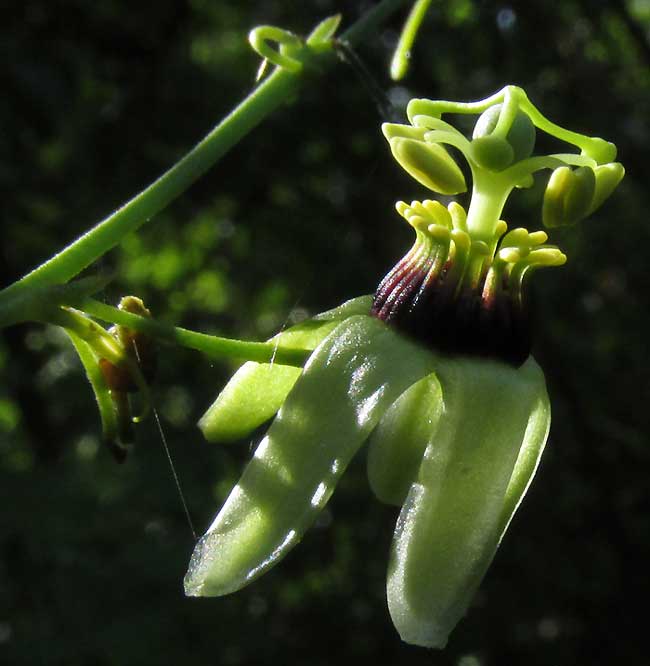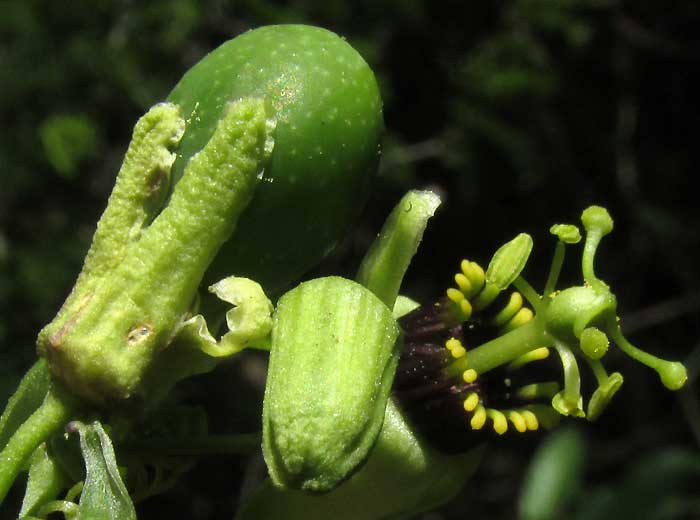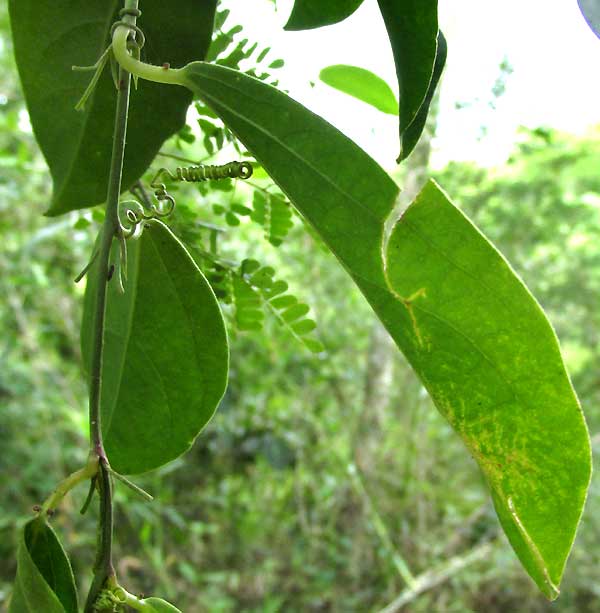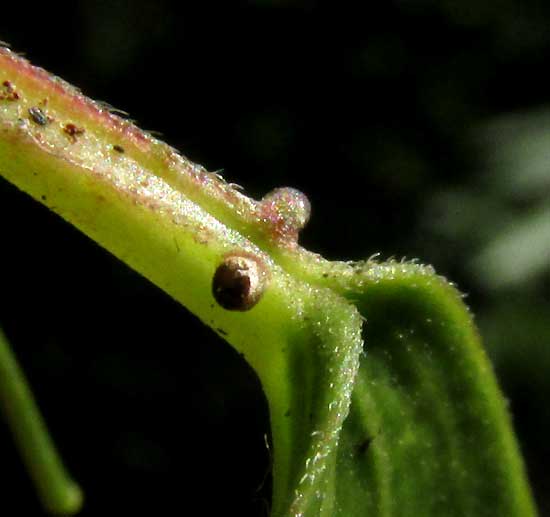Excerpts from Jim Conrad's
Naturalist Newsletter
Entry issued on September 10, 2019, from near the forest just west of Tepakán; elev. ~9m (~30 ft), N21.053°, W89.052°; north-central Yucatán state, MÉXICO
A TINY PASSIONFLOWER
Where the trail entered the forest, a slender vine dangled right before my face, shown below:

The little flower at the dangling stem's tip, when I looked at it closely, surprised me, shown below:

From its distinctive structure it was clearly a passionflower, but I'd never seen a passionflower blossom so tiny. And it was entirely missing any corolla. On a branch higher up, an immature fruit was forming next to another flower, shown below:

The vine's leaves weren't shaped like leaves of other species I know -- deeply lobed or butterfly-like -- but rather were simple, and mostly wider above their middles (obovate), as shown below:

Most passionflower leaves, but not all, bear glands where the leaf's petiole joins the blade. This species had the small ones shown below:

In the Yucatan we have quite a number of passionflower species. Of all those listed, ours best matche appears to be the species PASSIFLORA OBOVATA*, which seems to occur spottily from southern Mexico south to Nicaragua. CICY, the Yucatan's main research institution, doesn't list it for Yucatán state, but records it from Campeche, the state to our south, so the species here seems to be rarely collected.
I'm not 100% sure of the identification. Mainly, the few images of Passiflora obovata I find on the internet show the "corona" -- formed of the purple-bottomed things at the base of the sexual parts -- not as purple but as green. Also, our flower's corona might be taller and with fewer segments than others. However, so little information is available on the species that this may be normal variation.
Whatever the case, this was a good find, and I wouldn't have noticed it hadn't hit me in the face.